Recent Posts:
Bees: small wings, big impact
Bees are small and vulnerable. And yet they are indispensable: they pollinate, keep ecosystems in balance and enable growth. Their strength lies not in their size, but in their cooperation, resilience and the value they add. 🐝 That idea is encapsulated in the name The Bee Academy. This organisation helps IT professionals who, after burnout, stroke or other setbacks, want to find their place in the labour market again. Like bees, they play an invisible but indispensable role in our society. With the right opportunities, they can contribute, grow and flourish again – for themselves and for the organisations they end up working for.
- 3 min read
- Oct 10, 2025 12:00:00 AM
AI in B2B marketing: fixing the friction (part 2)
AI is everywhere and your agency is likely using it already. Whether it’s drafting content, refining audience segments, or optimizing campaign visuals, AI has become the elephant in the room. As a marketing or communications leader in a European B2B company, you’re accountable not only for the messages your agency produces—but increasingly, how they’re produced. And with the EU AI Act now in play, it’s time to ask tougher questions. You don’t need to micromanage your agency’s tools—but you do need clear agreements, transparency, and responsible practices. Let’s explore how to get there.
- 17 min read
- Sep 19, 2025 8:51:14 AM
From cat videos to conversions: why B2B marketers should embrace video
What are the most popular types of videos worldwide? According to the data-gathering organisation Statista, music videos hold the number one spot, followed by comedy/meme/viral videos at spot number two. How-to videos, product reviews, and tutorials do make it on the list, but they’re a little less popular.
- 14 min read
- Aug 25, 2025 6:42:23 PM
How Marketing Automation Transforms the B2B Buyer's Journey
The B2B sales journey is often characterized by its complexity, involving a diverse array of stakeholders with varying perspectives and timelines. Guiding a prospect through this intricate path to becoming a valued customer can feel like a significant undertaking. Fortunately, B2B marketers and sales professionals excel at navigating these complexities, providing valuable insights and maintaining engagement throughout the buyer's journey.
- 7 min read
- Aug 19, 2025 3:24:04 PM
KPIs for B2B healthcare agencies: insights from a client business review
At Living Stone, we recently conducted a comprehensive business review with one of our multinational healthcare clients, reflecting on a robust partnership throughout 2024. After successfully completing 25 diverse projects, we received exceptional feedback: quality of work (9/10), collaboration (8.5/10), and price competitiveness (8/10). These impressive ratings validate our strengths and highlight key factors that foster successful agency-client relationships, particularly within the international B2B healthcare market. The adequate use of AI has always been a driver of change and flexibility with our customers.
- 11 min read
- May 14, 2025 10:04:24 AM
Von Willebrand Disease: a common but overlooked condition
Heavy periods are often dismissed as ‘normal’ or just something women have to deal with. But what if there’s an underlying medical cause? One in five women with excessive menstrual bleeding may actually have a bleeding disorder, such as Von Willebrand Disease. Yet, this connection is rarely made, leaving many women undiagnosed and without the right treatment for years. To change this, Living Stone developed the website She Bleeds for CSL Behring, a platform that provides accessible, reliable information and helps bring this issue out of the shadows.
- 5 min read
- Feb 24, 2025 2:56:15 PM
Video: A powerful tool for patient communication
Clear communication is essential in the relationship between healthcare professionals and patients. Medical treatments can be complex, and patients often receive a lot of information in a short amount of time. That’s why it’s crucial to present healthcare information in an accessible and understandable way. Video is a powerful tool in this process—it lowers barriers, makes complex treatments easier to grasp, and helps patients and their families better prepare for their care journey.
- 4 min read
- Feb 24, 2025 1:03:06 PM
The word is out! Living Stone is moving to Ghent
That's right: next spring, Living Stone will pack its bags and head to the vibrant city of Ghent. But we’re not moving to just any location—we’re setting up at WATT The Health, a brand-new, health-focused business center and event space. Designed to be a hub for innovation and collaboration in the healthcare sector, WATT The Health is where health, sports, and tech businesses come together to connect, inspire, and grow.
- 4 min read
- Oct 9, 2024 2:54:46 PM
Is the Netherlands ready for a prehospital innovation?
Dedalus, a long-time client of Living Stone, turned to us once again for our healthcare expertise to explore the Dutch market for their groundbreaking digital solution for ambulance care: amPHI.
- 3 min read
- Oct 9, 2024 2:54:34 PM
Contact us
Lists by Topic
- B2B marketing (34)
- Healthcare (27)
- B2B marketing strategy (21)
- Content marketing (20)
- inbound marketing (20)
- B2B content marketing (19)
- Healthcare Marketing (16)
- branding (10)
- Digital marketing updates (8)
- Sustainability (8)
- reference marketing (8)
- B2B social media (7)
- Digital marketing strategies (7)
- Social media marketing (7)
- lead generation (7)
- B2B Business Plan (6)
- Customer Reference Program (6)
- Digital marketing trends (6)
- Employer branding (6)
- Social Media (6)
- Visual identity (6)
- analytics tools (6)
- digital marketing (6)
- videomarketing (6)
- Digital marketing plan (5)
- Smarketing (5)
- brand identity (5)
- sales and marketing (5)
- sonar (5)
- Communication (4)
- SEO (4)
- Video marketing (4)
- content (4)
- digitale marketing (4)
- metrics (4)
- online strategie (4)
- showpad (4)
- Content plan (3)
- Customer Reference (3)
- Marketing Metrics (3)
- Marketing automation (3)
- Measure ROI (3)
- Sales Enablement tools (3)
- business identity (3)
- hubspot (3)
- marketing analytics tools (3)
- online marketing (3)
- sociale marketing (3)
- web site (3)
- AI (2)
- B2B marketing plan (2)
- Blogs (2)
- Customer Reference Strategy (2)
- Facebook marketing (2)
- Google updates (2)
- Growth Marketing (2)
- Market your content (2)
- Print (2)
- ROI (2)
- Voice of Customer sessions (2)
- analytics (2)
- brand (2)
- corporate identity (2)
- corporate narrative (2)
- dashboard (2)
- design (2)
- digitale marketing analytics (2)
- logo (2)
- marketing analytics (2)
- marketing trends (2)
- neuromarketing (2)
- positioning (2)
- reporting (2)
- reporting service (2)
- visual (2)
- visual story (2)
- Content promotion (1)
- Digital marketing in China (1)
- Facebook live (1)
- Inbound recruitment (1)
- Inoffensive close (1)
- Market Research (1)
- Marketing ROI (1)
- More online traffic (1)
- New media (1)
- Podcasts (1)
- SEO trends 2018 (1)
- SMART goals (1)
- SMART goals and objectives (1)
- SMART marketing goals (1)
- Sales (1)
- Sales in modern age (1)
- Veeva (1)
- blogging (1)
- brand design (1)
- business (1)
- creating effective content (1)
- infusinar (1)
- internal communication (1)
- loyalty (1)
- loyalty ladder (1)
- marketing manager (1)
- marketing plan (1)
- marketing trends 2018 (1)
- online campaign (1)
- search engine optimization (1)
- storytelling (1)
- tips and tricks (1)
- visual branding (1)



%20(1).png)
